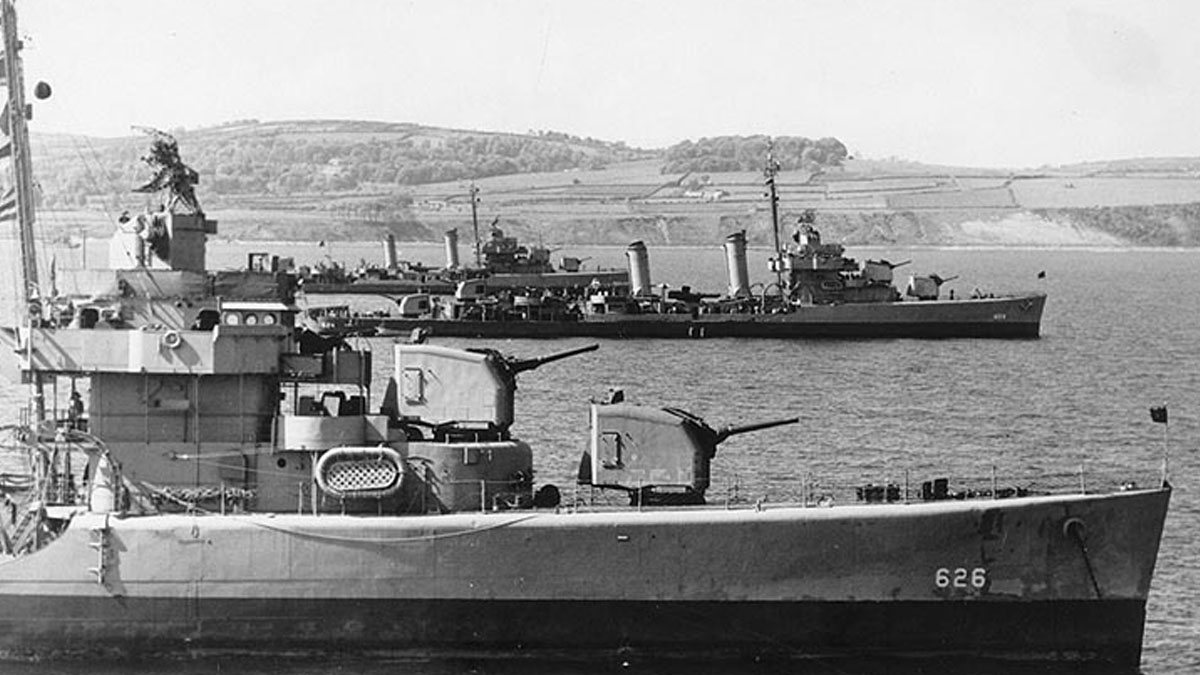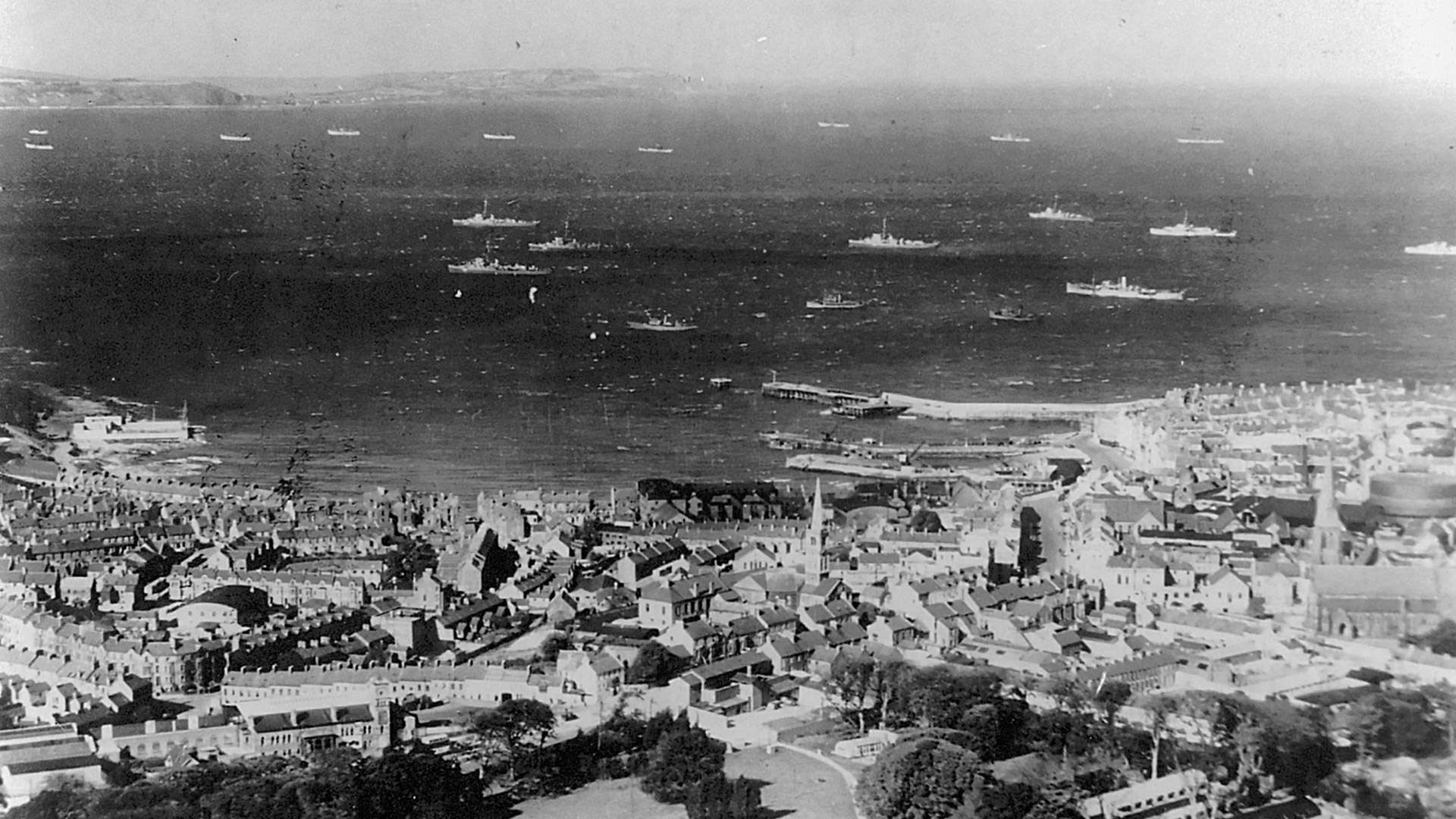Belfast Lough today is a busy waterway. Ferries to and fro and holidaymakers head for the coastal towns. During the Second World War, it was unrecognisable by today's standards. The British Admiralty and US Navy watched over much of the inlet.
Royal Navy Commander Kirkpatrick held jurisdiction over Belfast Lough and port. He operated from the Royal Hotel, Bangor, Co. Down. In 1942, Commander Keane of the United States Navy joined Kirkpatrick in the Co. Down resort.
As Allied forces gathered in advance of the D-Day Landings in Normandy, many naval vessels assembled in Belfast Lough. The first United States Navy ships arrived in January 1942. In May 1944, USS Arkansas, USS Nevada, and USS Texas arrived on the Co. Down coast ahead of the impending Normandy Invasion. General Eisenhower visited the shores of Belfast Lough addressing the US troops. From there they would begin their journey to northern France. The Eisenhower Pier, Bangor, Co. Down now bears the General’s name in memory of the historic 1944 event.
Authorities “sealed” all ships on 31st May 1944 after those on board enjoyed one last night in the American Red Cross Club or Caproni’s Ballroom. On 3rd June 1944, the US Navy battleships and cruisers departed Belfast Lough for the landing beaches of Normandy, France. Actor Clark Gable was in Bangor, Co. Down to film the departure.
There were heavily camouflaged naval escorts and a big number of cargo ships, presumably all carrying equipment and armour for the invasion, and all so tightly packed in, that it looked to us as if you could have walked straight across them and into Bangor without getting your shoes wet.
James Warnock Hunter – BBC WW2 People’s War
Disaster strikes on Belfast Lough
Although well defended, Belfast Lough was not impenetrable. A Focke-Wulf Condor (I/KG40) from 1st Staffelhof Kampfgeschwer 40 attacked on 25th July 1940. The long-range bomber dropped mines around the entrance to Bangor Harbour. A similar raid sank the SS Troutpool earlier that week. The Troutpool still lies in the water of Belfast Lough.
The plane then headed towards Islandmagee. Gunners at Grey Point Fort spotted the crew while they were freeing a lodged mine. In an effort to escape, two of the Condor’s engines failed and the plane crashed into the lough. Two of the crew of five were never recovered. An anti-submarine trawler rescued the remaining three airmen bringing them ashore in Larne.
Disaster struck again in Belfast Lough in what became known as the Bangor Bay Disaster of 1943. The Pilot Launch – Miss Betty – capsized and sank in bad weather while returning to port in Belfast Lough. The Admiralty requisitioned the ship on the outbreak of war. Jim Davidson of Donaghadee obliged allowing Miss Betty to contribute to the war effort. By coincidence, three of the men killed in the disaster came from the same small coastal town. Their names appear on the Donaghadee War Memorial.
Defending the Lough
The number of vessels in the Lough during the war was staggering. Over seventy minesweeping and anti-submarine trawlers operated in the area. Smaller vessels guided incoming and outgoing convoy ships. The Pollock Dock in Belfast was set aside for Admiralty use. Twenty extra mooring dolphins appeared on the eastern side of Herdman Channel. These changes in the Sinclair Road area accommodated the swelling number of vessels. Defending Belfast Lough was of vital importance.
You can visit the defences of Grey Point Fort today. Many of the original buildings and armaments still stand. An ammunition magazine, gun battery, shelters, observation posts and searchlight emplacements remain visible. The fort was a vital part of the defence of Belfast Lough. From there, Coastal Defence Personnel instructed all approaching vessels to identify themselves. Then followed a warning “heave or be sunk” and the firing of shells if required.
As well as Grey Point Fort, scattered gun batteries protected the lough. A submarine indicator loop at Sandeel Bay, Orlock provided extra protection.
As the war drew to a close, there were happier scenes on Belfast Lough. The Gripsholm – a Swedish vessel – arrived on 30th May 1944. On board were around nine-hundred British, American and Allied prisoners or war. Many of them went to a military hospital in Belfast. The others continued their onward journey to freedom from the Belfast waters.

